I’ve started a new venture, guided walks around the buildings of architect Watson Fothergill in Nottingham. I’ve conducted two walks so far, and I am planning more events soon. At the moment the details are over on WatsonFothergillWalk.com
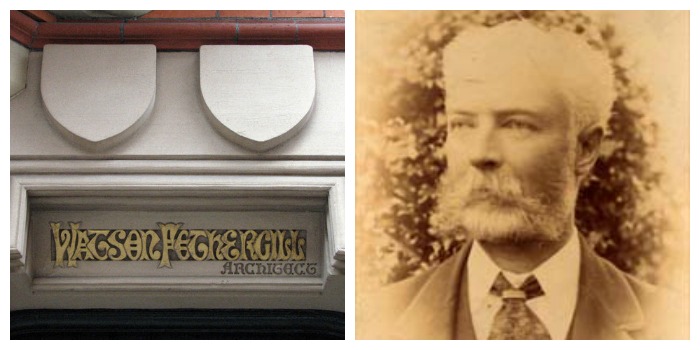
Writer, Researcher, Tour Guide
I’ve started a new venture, guided walks around the buildings of architect Watson Fothergill in Nottingham. I’ve conducted two walks so far, and I am planning more events soon. At the moment the details are over on WatsonFothergillWalk.com

The name Jason Evans rang a bell but it was not until I arrived at the opening of this show that I realised from where. Evans is a photographer who works in music and fashion, and years ago I’d met him briefly when I was Japan, he was photographing that band that I like…
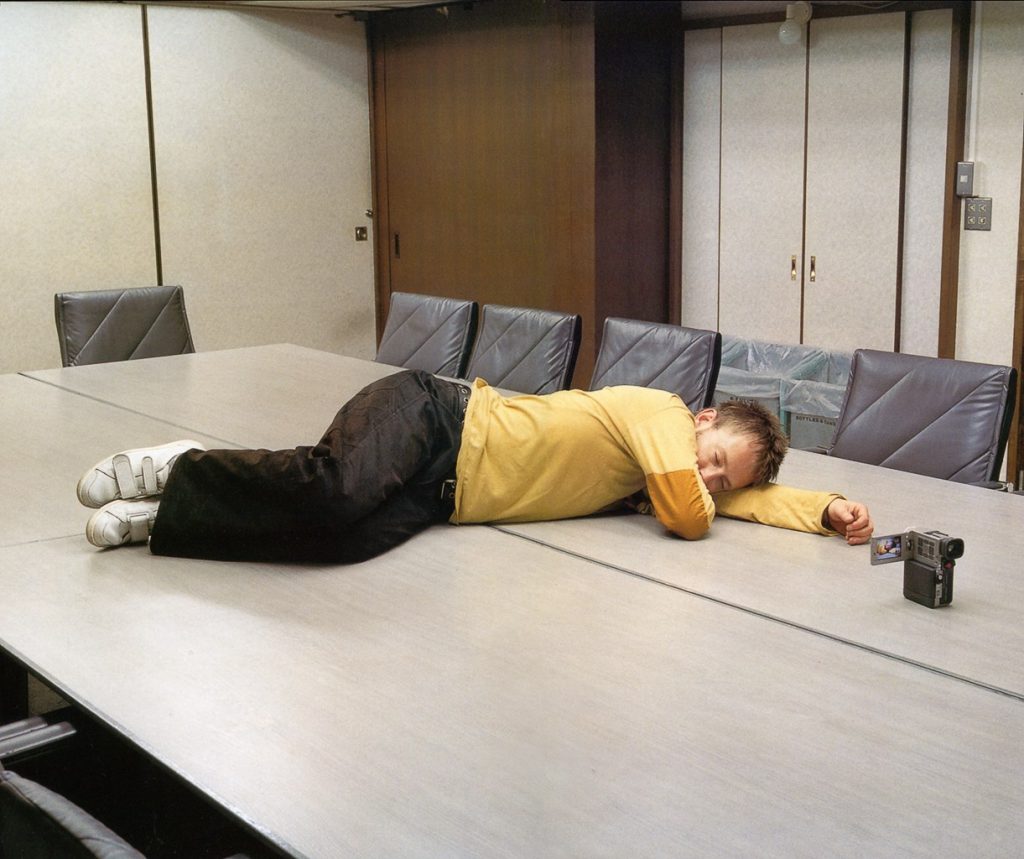
At the opening I couldn’t resist introducing myself and this blast from the past rather freaked him out, he remains something of a Radiohead insider. Aside from this weird coincidence, I was drawn to the work in the exhibition, especially the re-contextualized shop signs and the vivid narrow boat-style sign writing taking up a whole wall.
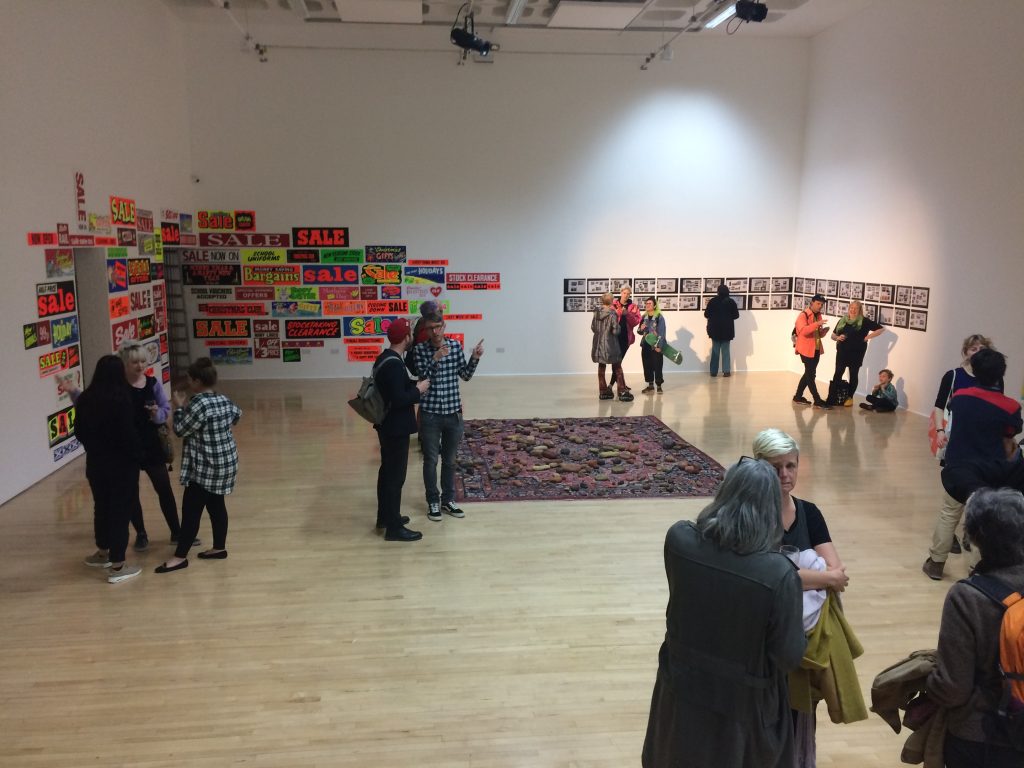
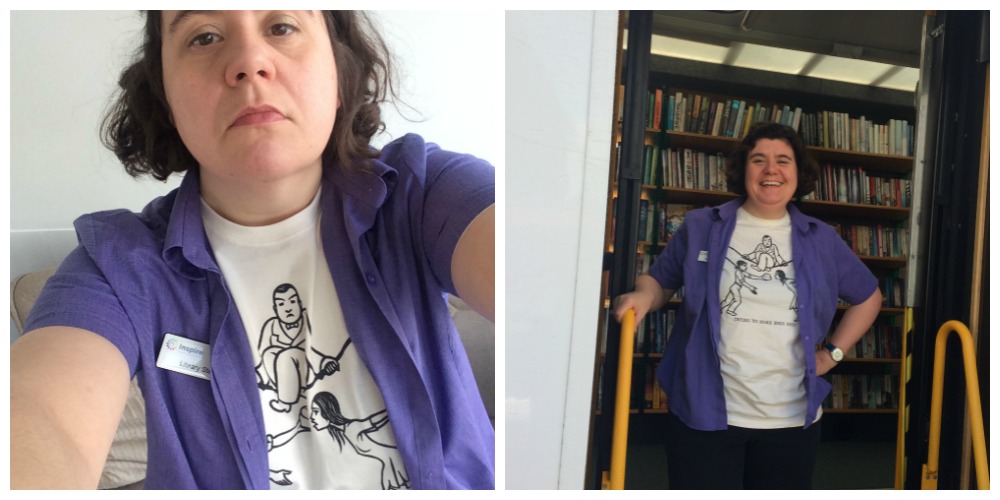
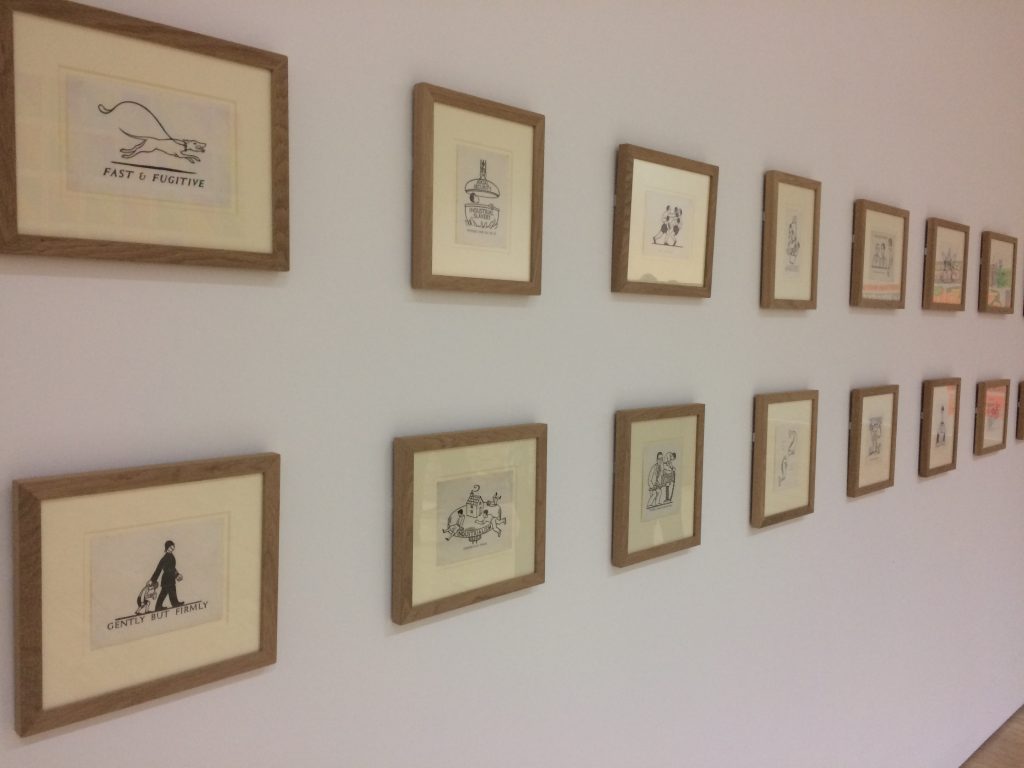

*
Going back to the Bonington for the closing walk-through with Tom Godfrey and Jason Evans opened up some of the themes of the exhibition, and I’m glad I returned for a closer look.
Jason Evans lives on the Kent coast and his own contributions to the show were very much influenced by flotsam that he finds on the beach. The central piece, Wool and Clay, was made up of his living room rug and eroded bricks. The unrecognisably smooth shapes matched the colours of the carpet. The piece played with ideas of ownership, houses and mortgages. Bricks are made near Pegwell Bay, said Evans, people are moving out to the coast as they can no longer afford to buy houses in London, when it comes down to it, all you’re left with is bricks… “Pegwell Bay is the place where the Romans first landed in Britain, where Christianity first landed in Britain and where the band CAN arrived to support Black Sabbath… it has significance…” A pleasing, to my ears at least, echo of Psychogeographical ideas about place, connections and coincidences .
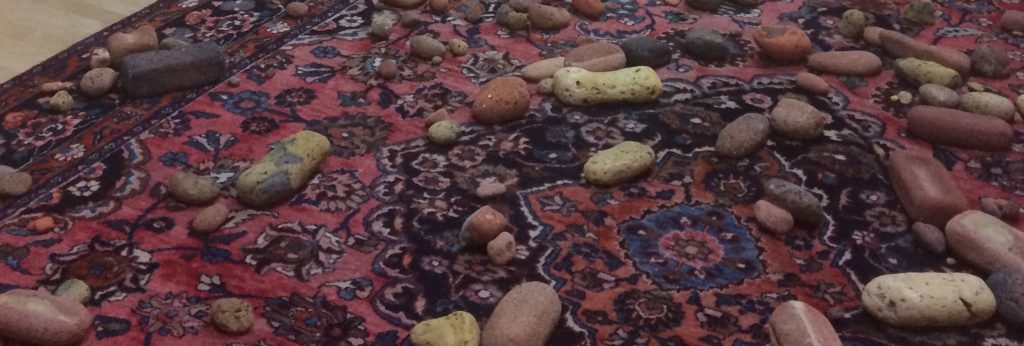


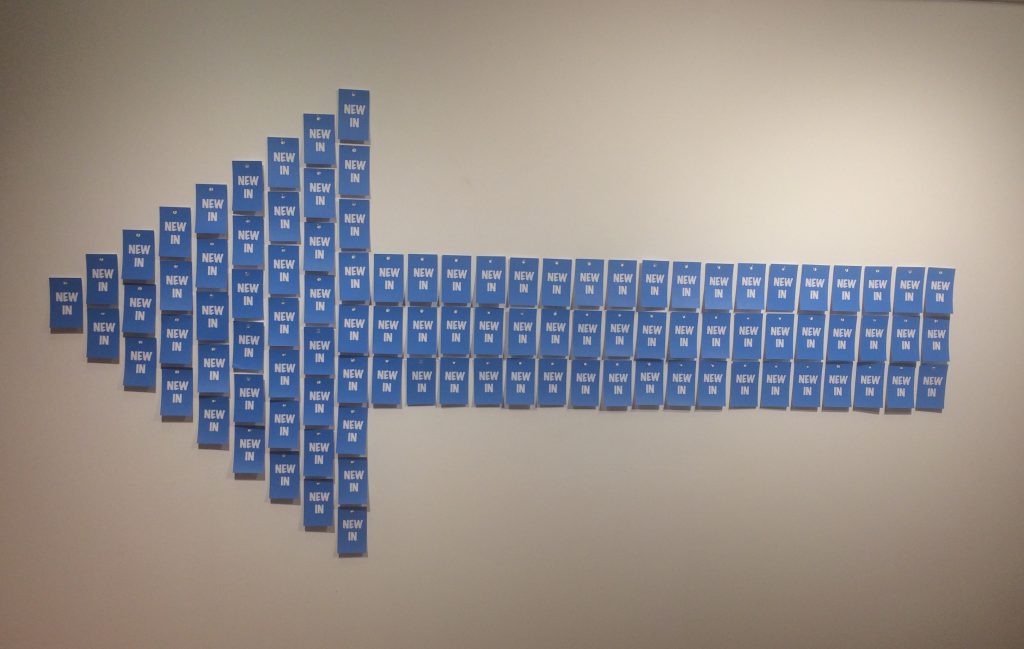
This show felt like a celebration of these specialised trades as well as an elegy for a time before absolutely everything was in the business of just selling you something. That said, I left with an overwhelming desire to go into Clark Brothers and buy some signs next time I’m in Manchester.
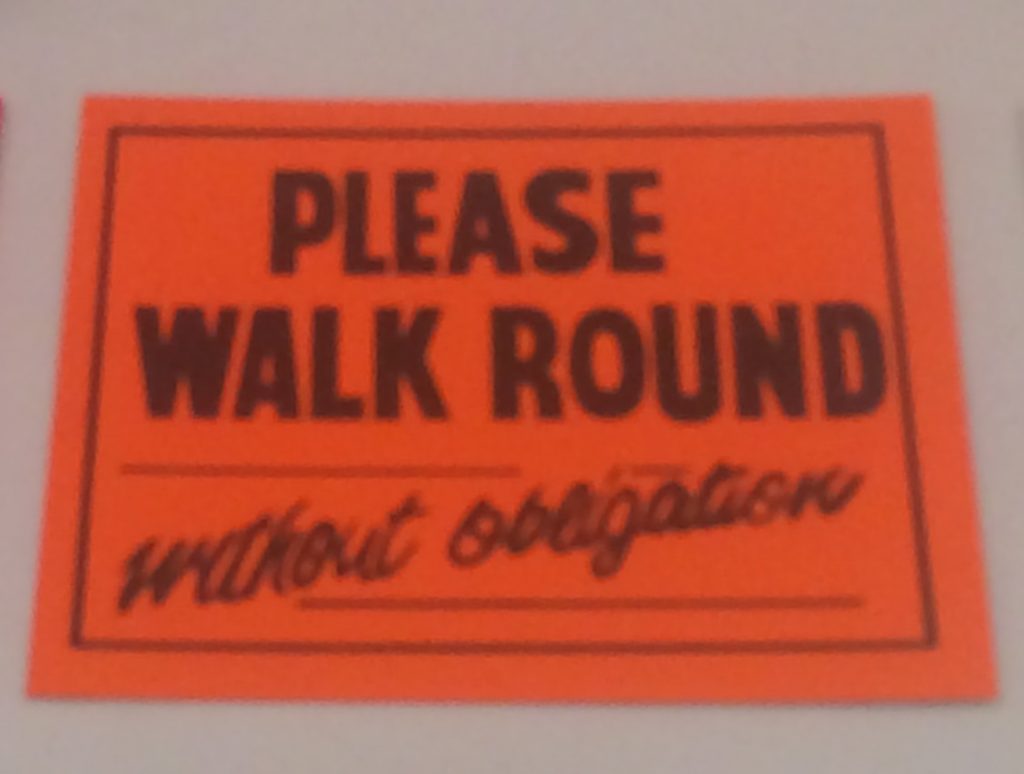
A trip to London requires planning, an ample budget and a lot of friendly sofas to sleep on. All these elements came together last week and I went in search of some refreshing cultural adventures.
For the last several months I’ve been working on something in Nottingham (that I hope to be able to tell you about soon). The project has renewed my interest in architectural history (see my earlier blog on Watson Fothergill) and sent me off in several directions.
Trying to track down the provenance of a stained glass window attributed to William Morris and Edward Burne-Jones, but produced after both their deaths, led me to the local library and Fiona McCarthy‘s hefty biographies.
Having enjoyed both books, particularly William Morris: A Life for Our Time, I resolved to see some of their art and in the case of Morris, the house he built on the outskirts of London.
I had a wish list of things I wanted to see while I was in London and I managed to pull quite a few of them in along with a few other pleasant surprises along the way.
First, The Wellcome Collection, within striking distance of Kings Cross/ St Pancras and with a friendly cloakroom to relieve me of my suitcase for a few hours. I queued for a while to be admitted to a room full of coloured mist, a reboot for the senses – an art installation, States of Mind, a prelude to a larger exhibition about “consciousness” due to start next year.
With time to wander, I fulfilled a long held ambition to find the grave stone of Mary Wollstonecraft in Old St Pancras Church Yard. This is also home to the Soane monument (the shape of which inspired the design of the telephone box – a fact I learned on my last visit to London when, unable to get into an overbooked exhibition at the British Library, I visited the unexpected delight of Sir John Soane’s Museum, of whom more later). Loose ends were starting to be tied up, it was Fiona McCarthy’s insightful biography of Lord Byron that had piqued my interest in Shelley and Mary who were known to tryst at her mother’s grave…
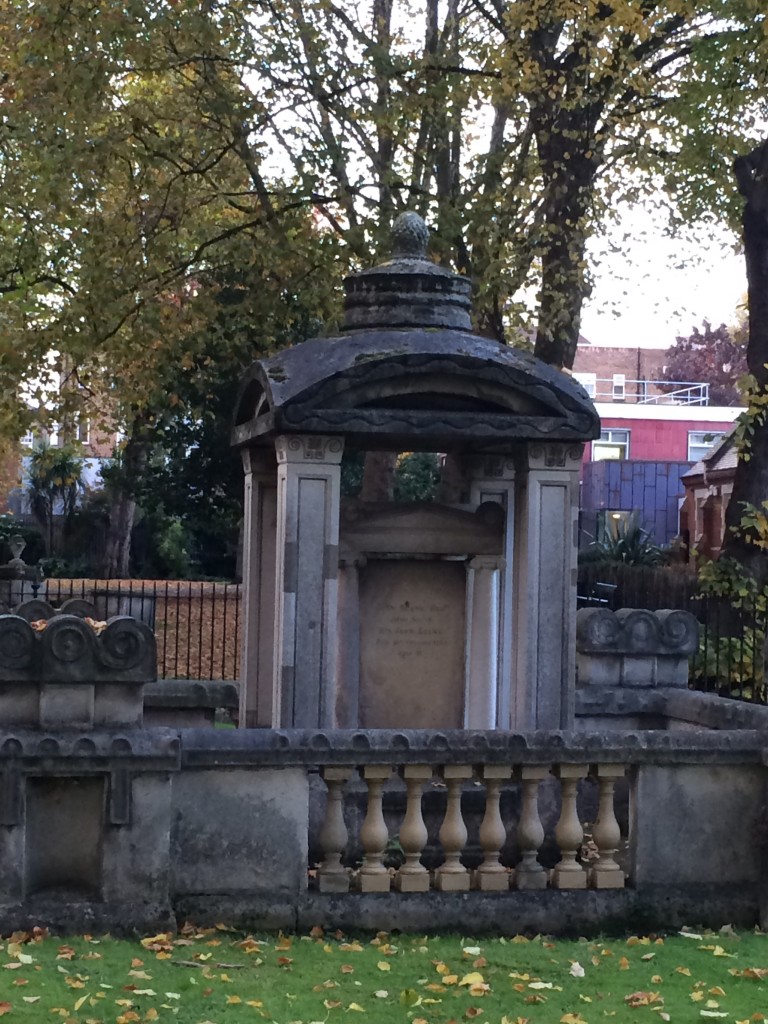
The following day I had planned to visit the V&A, whose tearooms alone are a treasure trove of Morris & Co designs, but on the way there I got distracted. I’d spotted a striking poster for an exhibition at RIBA – on Palladian architecture. Having never visited their Portland Place HQ before, I was impressed by the building and even more taken with the clean, well arranged exhibition of drawings and models.
By the time I reached Kensington, the full armageddon of half-term week in museum-land had hit and I abandoned hopes of the V&A in favour of retaining a shred of sanity. Towing a case around London limits what you can do and I fell back on one of my favourite places, which just happens to have a spacious free cloakroom, The National Portrait Gallery. I seemed to be the only person who’d read the small print and found the app to accompany Simon Schama’s Face of Britain exhibition and I let his distinctive tones guide me… The dots continued to be joined – a portrait of William Morris’s wife Jane appeared in the ‘Love’ section.
The next day, relieved of the burden of my case, I decided to pull in another visit I’d been thinking about for a long time. The Banqueting House, the last vestige of Whitehall Palace – and Britain’s first Palladian building. An exercise in well guided tourism – with not only a comprehensive audio guide, but also an eager and entertaining steward keen to talk the handful of visitors through the history of this hidden gem. Currently undergoing restoration on the outside, the stone work was originally refaced by Sir John Soane (and the connections on this trip just keep mounting up).
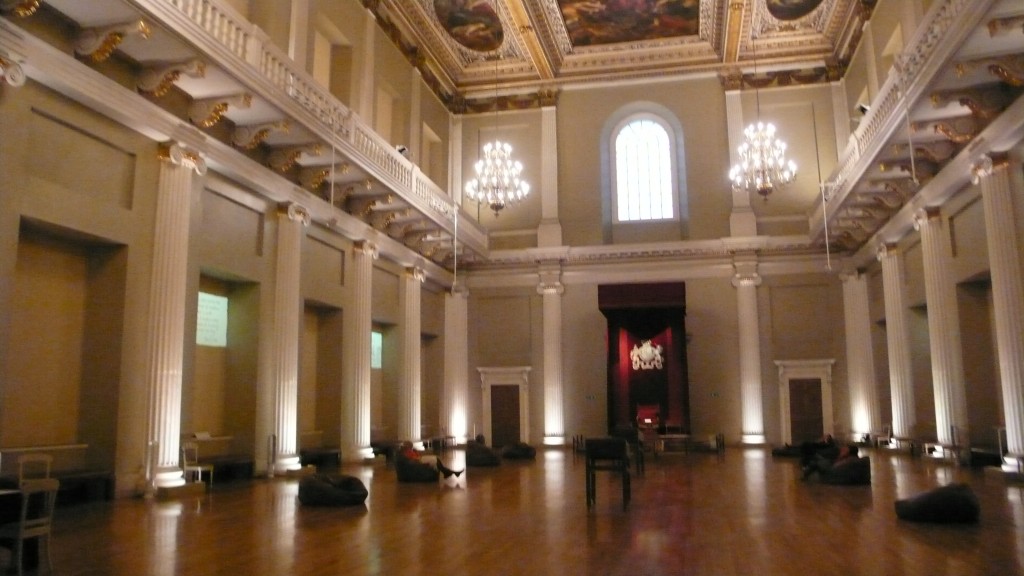
I then took a train out to Bexleyheath and found The Red House, which William Morris and his wife had built and lived in between 1860 and 1865. Despite being there for only a short time, it was pivotal in the creation of his design business, eventually called Morris & Co and its very walls tell stories of the decorating parties held there with artists, poets and other luminaries of the period all contributing to the patterns and schemes which the National Trust are still discovering hidden under the modern wallpaper. The purpose-built house has a studio space to make even the most casual artist jealous, full of space and light. It was easy to imagine the “Topsy” of McCarthy’s biography in these rooms. I picked a windfall from the orchard and put an oak leaf in my pocket, hoping that some of the inspiration would rub off.

Dante Gabriel Rossetti, who was often at The Red House, was fascinated by wombats and kept them as pets. He often drew caricatures of his friend (and rival for the affections of Mrs Morris) where the roly poly animal stands in for the artist. He even named one of his wombats Topsy. The National Trust have instigated a Wombat Hunt for The Red House’s younger visitors. Cuddly marsupials abound in each room…
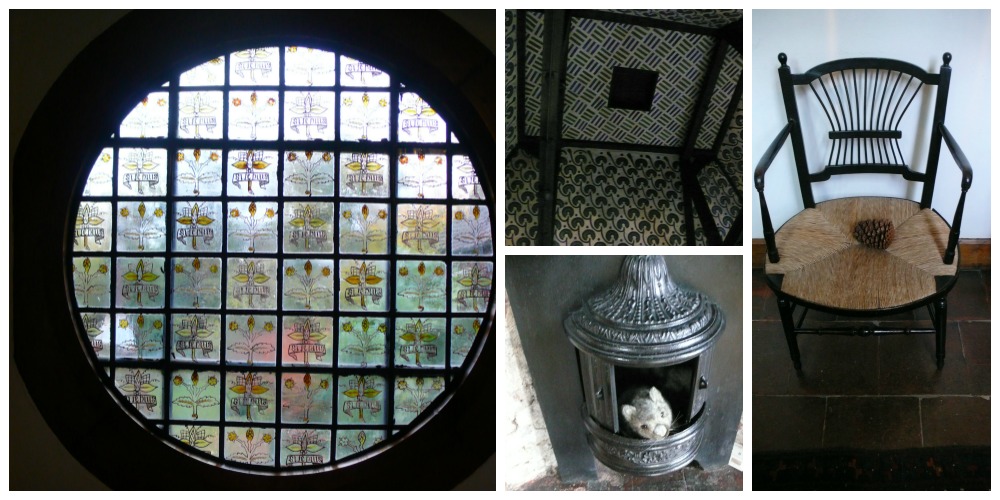
A conversation over the Wallpaper pattern books in the Morris children’s old bedroom prompted me to investigate the William Morris Gallery in Walthamstow and the next day I headed out to the furthest stop on the Victoria line to find a rather wonderful Georgian Mansion where Morris lived for part of his childhood.
It has been refurbished as a gallery with space for contemporary exhibitions as well as an archive of objects from his life and work. My favourite items being his extra large cup and saucer and the leather satchel he took around the country when engaged in socialist lectures later in his life.
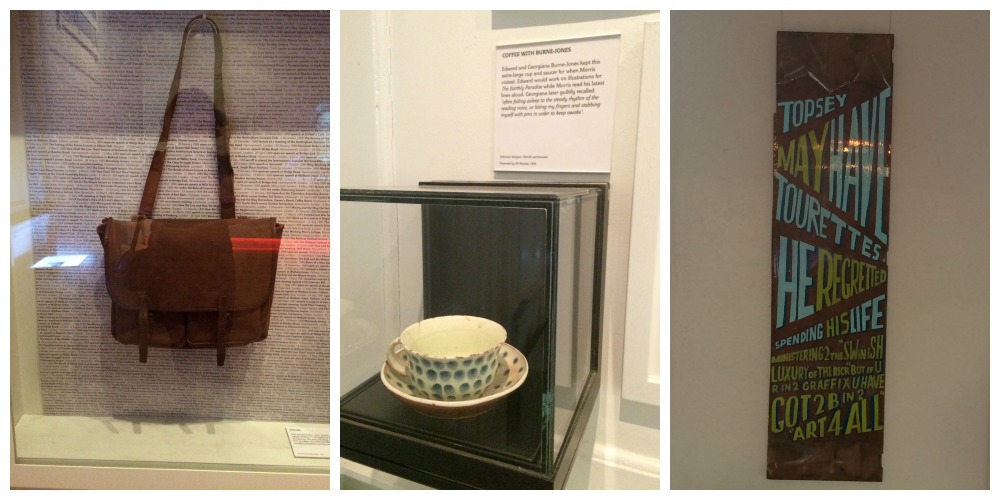
Above all, Morris seems to have been someone who possessed great enthusiasms, about poetry, art, fairness and fellowship. The gallery does a great job of bringing these to life. The accompanying exhibition documenting Bob & Roberta Smith’s campaign to save arts education for children chimed well with the themes of Morris’s own life and the continuing relevance of his ideas.
I headed back on the Victoria line to Pimlico and Tate Britain, to wallow in the room full of paintings by Rosetti and Burne-Jones.

The evening ended up with a visit to an old friend in Deptford – where there are so many stories and secret places it will need a blog all of its own…
Saturday began with a trip to Borough Market, a walk along the Thames (pausing to look in at the Tate Modern’s Turbine Hall and taking a ride in the singing lift at the Royal Festival Hall). Tea in the Crypt at St Martin’s In the Field (another Palladian building), then using up the last of my energy for one more exhibition – Goya: The Portraits at the National Gallery, which was crowded and expensive but still impressive.
Billed as “A mysterious gourmet tour of Primary in eight courses,” this evening of food, art and exploration promised to combine the culinary talents of Small Food Bakery’s Kimberley Bell with work by many of the artists who find their home in this artist-led space.
The evening began with ‘Khlebosolny’ a ritual welcome across the threshold comprising sourdough bread symbolising hospitality and friendship, and salt symbolising preservation and longevity. Performance artist Chris Lewis-Jones, dressed as a waiter, played the accordion at the door.
Atmospherically lit and decorated, the central project space was transformed into a moody dining room – but first a trip to the bar for a Midland Bramble cocktail made from gin, lemon and locally made cherry wine.

The next course led us to Russian born artist Yelena Popova’s studio for The Black Square, a Constructivist inspired vodka cocktail full of fruit juices, vitamins and minerals.
Thus enlivened, we were led into the next space and presented with specially selected pieces of chocolate, while behind a screen, Rebecca Lee performed a piece for flute by Debussy.
Back in the bar, performance artist Simon Raven was swathed in silver foil to perform Human Canapé, his comment upon actors being hired at minimum wage to re-stage seminal performance works at an LA Museum of Contemporary Arts Gala. Cheese and pineapple on sticks, stuffed olives and performance art make one rather thirsty, so it was back to the bar for another cocktail.
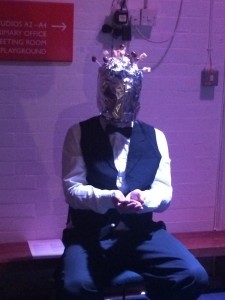
The next course led us into a private view at TG, the gallery space within Primary. The latest instalment of their installation, ‘Occasional Table’ was accompanied by nettle crispbreads topped with cheese and a stimulating slice of red chilli.
Eggs, heads and dust, the sixth course, offered hard boiled eggs, a selection of powdered vegetables and spices served with infused oils. A glass-topped case filled with one of Nadim Chaudry’s works made up of chicken skulls served as a table at which to eat the eggs and discard the shells, leading to some interesting reactions from diners. The used plates looked like colourful discarded palettes.
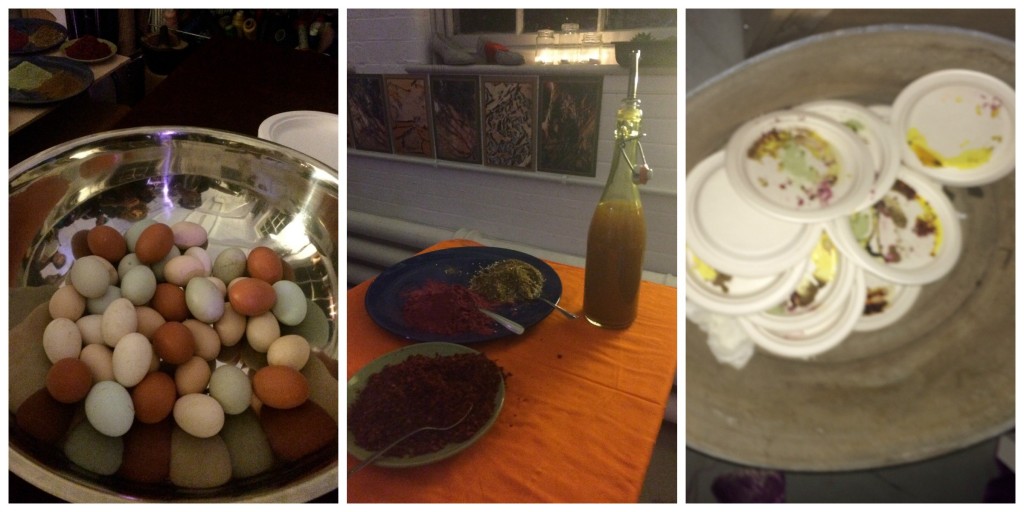
Back in the main hall we took our seats to witness Frank Abbot investigate a variety of historic and contemporary chopping and slicing devices, combined with a range of surveillance technology and home video equipment – part JML demonstration, part slapstick performance this made up SALAD – Live! which sadly didn’t end up on our plates.
The next course devised with “farm artist” Georgina Barney, comprised a beef broth (with spirals of mooli) then slow roast brisket served with dripping on sour dough toast formed a portrait of the Blackbrook Longhorns. The breed are a living tribute to breeder Robert Blackwell whose worked helped usher in modern food production through selective breeding. Vegetarians were offered an edible tribute to agriculturalist ‘Turnip’ Townsend, who famously promoted a system of crop rotation which increased yields and helped fuel the industrial revolution.
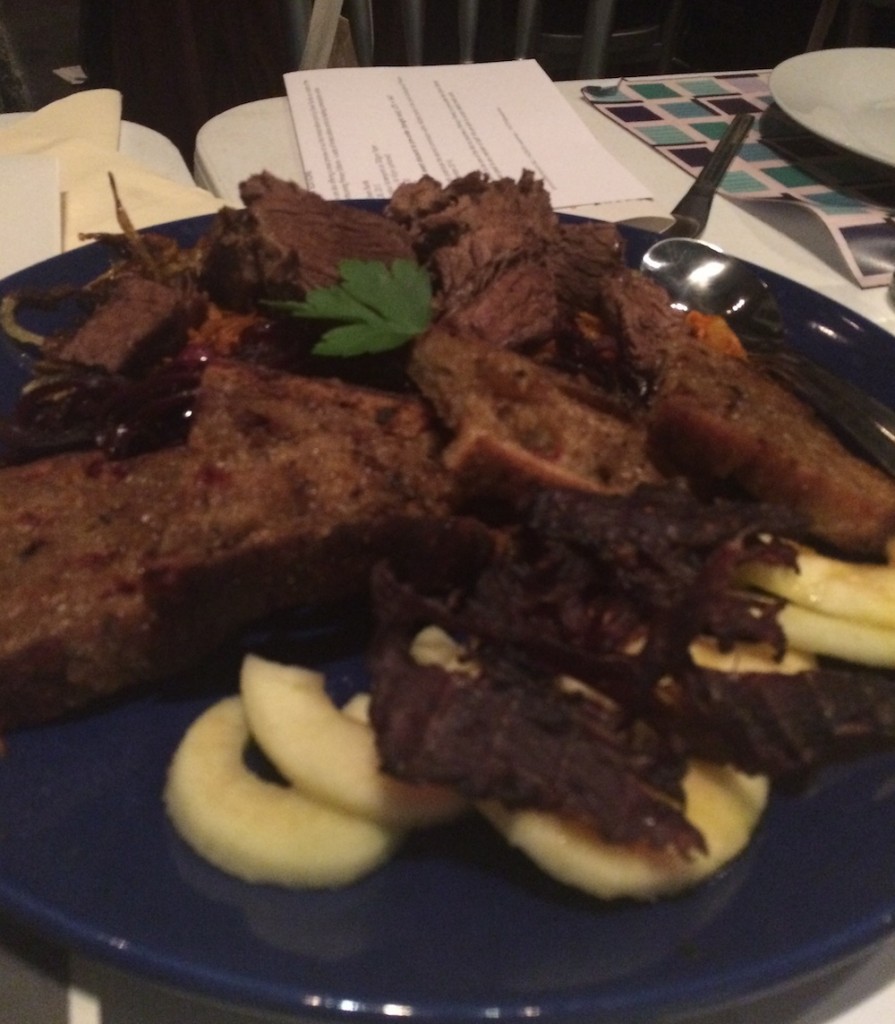
This was followed by a selection of geometric deserts, inspired by the home interior products of Joff and Olly, designers of Lane, whose studio also resides at Primary. A rose and liquorice battenburg, lemon and pear jelly and a blueberry and strawberry pannacotta brought colours to the sharing platters.
Coffee allowed an opportunity to visit Wayne Burrows‘ studio for a reading with The Holcolme Tarot, a fictional pack of cards exploring ideas of meaning and randomness… my reading: Pandora’s Box, Altered State and Marriage symbolising chaos coming back into balance…
Finally, replete with local wine from Nottingham’s Eglantine vineyard, a visit to ‘A Séance with the Green Fairy’, where no one was quite sure if we should be making contact with the other side or just eating the homemade absinthe fondants and fudges while artist Simon Withers lurked in the darkness.
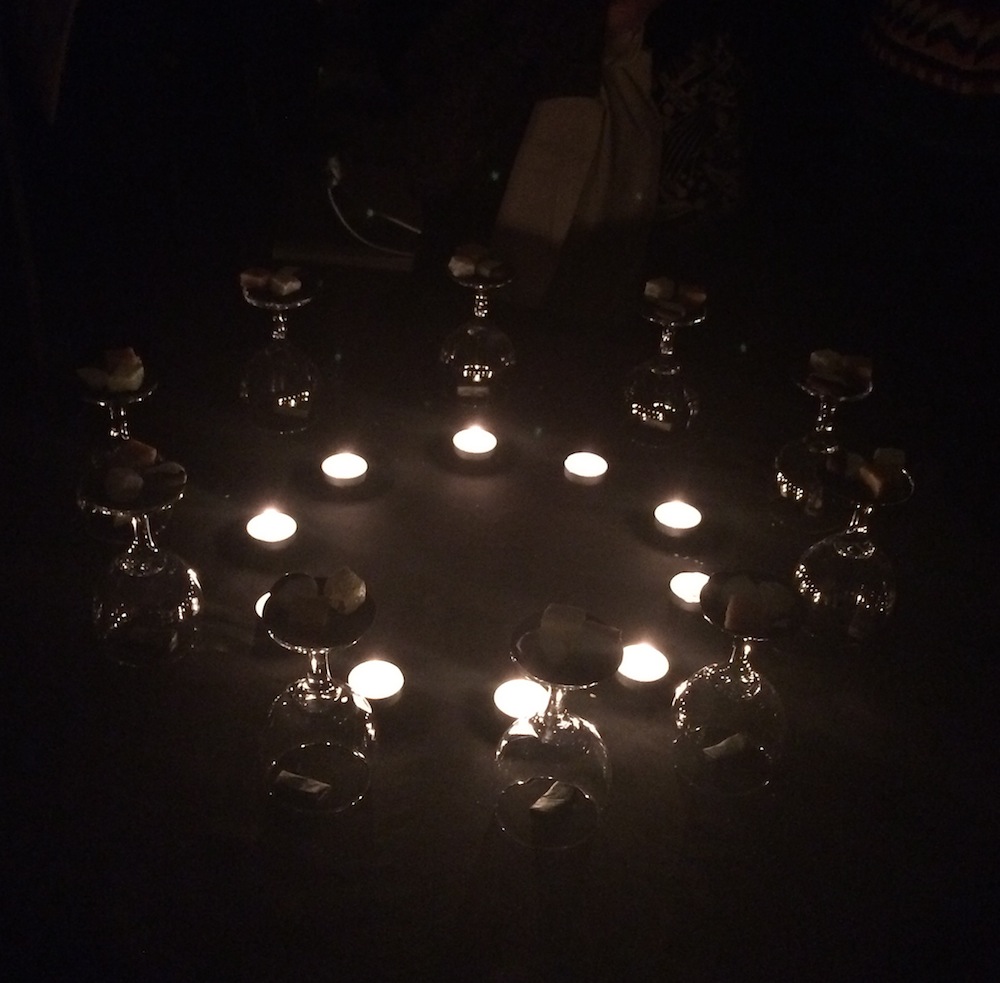
Primary is full of ideas and the artists who work there have found a way of collaborating together to great effect. Hopefully events such as this will help them raise the funds they need to continue their work well into the future.
Glasgow International (GI) is in full swing and the project I worked on with Queens Park Railway Club has been launched.
Queens Park Music Club Volume 1 – a digital publication comprising artists’ responses to questions about the role of music in their practice – featuring playlists, essays, illustrations and meditations on the theme – is now available to download.
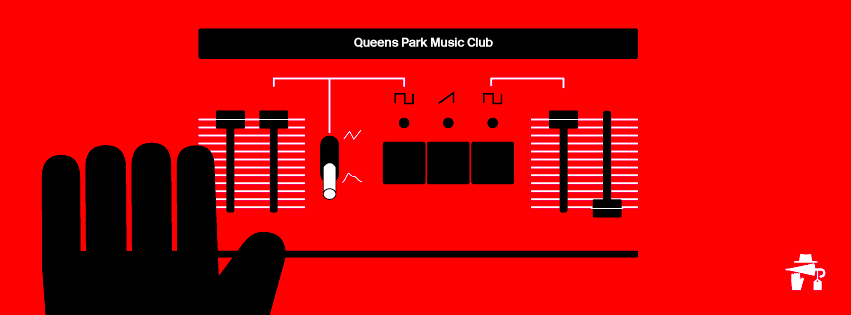
There was a lot of discussion about what form this collection of work should take – should we embed playlists? If so what form would they take? In the end it was settled that links to the music would be placed within the text – leaving it to the internet to provide the music – rather than curating a podcast or compiling a mix. With so many issues around copyright, ownership and piracy tied up with listening to music online it was detracting from the focus of the project. I feel it demonstrates the effect that the internet has had on the breadth of people’s musical taste – almost everything is available if you can find it, indeed we found that to be the case, with the exception of only a couple of the pieces cited in the publication.
In the end, I didn’t write for the project myself but, in researching the form it would take, I did compile a piece of my own which I present below with a Mixcloud featuring the tracks under discussion.
QPRC Playlist 1: Live Tracks by Queensparkrailwayclub on Mixcloud
*track 1* Joe Cocker – Delta Lady (Mad Dogs & Englishmen, Live Album 1970)
“Delta Lady it is my love,” With his Sheffield showing, Joe Cocker launches the closing track his 1970 live album. I have a clear memory of the gatefold sleeve, full of circus imagery and Cocker’s sweaty, crazed, stoned, gurning face in my parent’s meagre vinyl collection when I was a kid. The sound of all the drugs the band took, all the life they were living is captured on this record.
“Rock ‘n’ roll!” Cocker chuckles, like he’s almost surprised. I remember not being allowed to play with my parents records – I must have looked at the sleeve while my dad played it on the big wooden box of a hifi. My parents had some history with Cocker, attending his early pre-fame, pre-America gigs. They tell a possibly apocryphal story about him singing while standing on a table in a working men’s club. There’s another tale that they never finish involving Cocker disappearing to the toilet mid-set, presumably partaking in some recreational pursuit that parents don’t want their children to know about.
Is this where I get my need to follow bands from?
In my head I’m at some dream-version of the gig, it doesn’t match the tour film with Cocker’s crazed battery bunny drumming dance. Worn out, one more time, feeling it. The big finish. The reprise, pushing it just that bit further. They don’t want it to end.
They’re playing so hard there’s not much left of the song – that shriek, that voice almost falling apart. No meaning left but the moment. Good live albums which capture the essential transience of live performance are rare. Live albums that make you feel like you’re at a gig are rarer still. It’s impossible to talk of ‘authenticity’ after all this is a Yorkshireman singing the blues.
*track 2* Radiohead – The National Anthem (I Might Be Wrong: Live Recordings, 2001)
When I hear this, I am sent back to the Buddokan toilets. When Radiohead played in Tokyo in 2001, I was there. The gig that night started early and like the other shows on that tour they opened it with The National Anthem and it felt like a threat. That bass, that noise, the whole round place shook with the shiver and the panic of it. And we weren’t even in the auditorium yet. It was the manifestation of my touring anxiety dream (I get lost, I can hear the band but I can’t see them).
The way they were playing that song at that time went beyond the dark album version, it becomes something purely physical.
My muscle memory makes me twitch, I don’t hear this one I feel it. Aggression and fear and anger and all the things I take from those gigs. It’s a feeling in the pit of my stomach.
*track 3* The Jesus & Mary Chain – Reverence (Live in Bristol, 1992 from BBC Radio Live in Concert album, 2003)
Lying in bed with headphones on in the dark. The year my taste was formed. The Mary Chain are something forbidden, their name (to a Catholic school girl, afraid of everything) the dirtiness of their noise, the sexy confidence of it. If this was a gig, then I had to go to one.
I know now that the Mary Chain wear their influences on their sleeve, but then it was my gateway to The Stooges, to Jonathan Richman, to the Phil Spector Wall of Sound. JAMC got to me first.
I was too young to go their gigs that year, and I never got the chance to see them before they split. They’ve played a few gigs in the last few years but I they’re the last band I’m yet to see. I joke that I’ll book them myself if that’s what it would take for me to be able to see them play The Barrowland.
*tracks 4 & 5* Patti Smith – Babelogue/ Rock n Roll Nigger (Easter, 1978)
Though these are from a studio album, they sound live. When I saw her play in Amsterdam, in a moment of serendipity, she adjusted the lyrics of the spoken word Babelogue to become germane to the evening. Never having seen her before, I was astonished by her energy. I thought I got it. I didn’t really get it until that moment.
It’s a call, a summons. There was unity in the room, beyond that of a mere live music show. I am a little afraid of Patti Smith, her life force amid all her tales of dead friends is an astonishing creative power.
*track 6* The Clash – The Magnificent Seven (live in Boston 1982, from From Here To Eternity: Live, 1999)
This live album was released around the same time as Joe Strummer’s first Mescaleros album. I saw that band live, but I’m too young to have seen The Clash, they’re still a massive band in my life. This album always comes out in times of crisis. It’s a fantasy gig from several recordings making up a survey of the band’s career in a way that none of their actual real gigs would have been. Its a protective cloak, an invincible strength.
*track 7* Nina Simone – Sinnerman
Just one of many tracks I could have put in by Nina Simone, another act I will never get to see play live whose work I treasure. At this fantasy concert I am in the audience and it doesn’t matter if this was recorded in a studio or at a concert because it sounds like it’s happening in front of you. “Power.”
*track 8* Jeff Buckley – Je n’en connais pas la fin (Live at Sin-e EP, 1993)
I saw Buckley play live a couple of times, when he was being lauded for his first records. Even if he’d lived, the gigs would have been special. He was ridiculously handsome, funny, with a vocal range that none of the other indie acts of the time came close to. His studio albums have that edge of over production and “classic rock” which was against my religion, but this acoustic EP was a thing of rare beauty. Every note Buckley committed to tape seems to have been released as a “special edition” it’s a cliché, but the music is immortal.
*track 9* Talking Heads – Life During Wartime (Stop Making Sense, 1984)
This is from the album of the concert film. Not really a filmed concert, more a concert as a film. There is another Talking Heads live album (The Name of This Band Is) but Stop Making Sense is the perfection of the form.